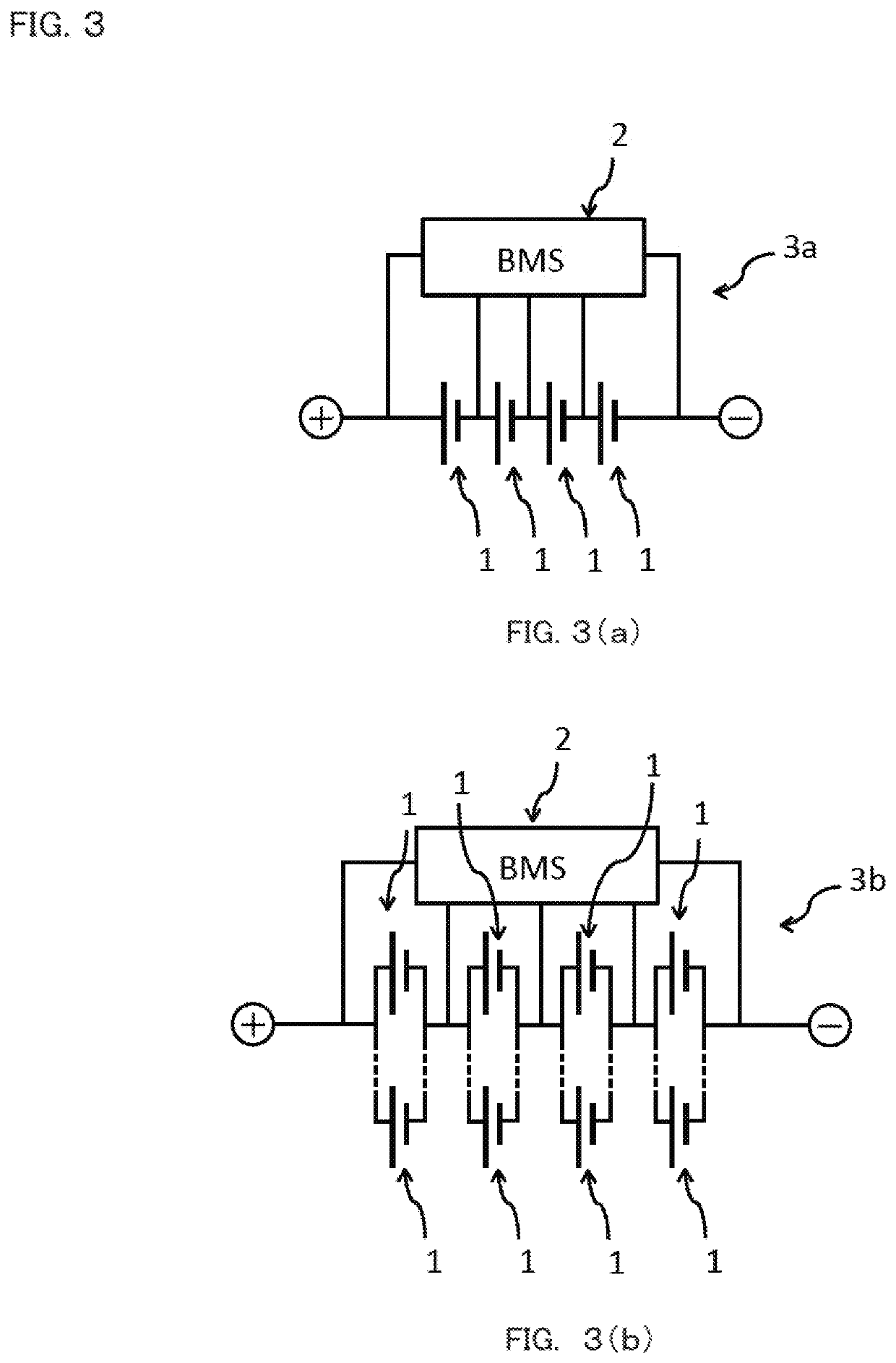Non-Aqueous Electrolyte Solution, Non-Aqueous Secondary Battery, Cell Pack, and Hybrid Power System
- Summary
- Abstract
- Description
- Claims
- Application Information
AI Technical Summary
Benefits of technology
Problems solved by technology
Method used
Image
Examples
tenth embodiment
trolyte Solution
[0113]According to a tenth embodiment, the non-aqueous electrolyte solution of any one of the first to ninth embodiments preferably further contains linear carbonate.
[0114]The combined use of acetonitrile and linear carbonate advantageously acts to suppress association between acetonitrile and LiPF6.
[0115]Specifically, the composition of the non-aqueous electrolyte solution according to the tenth embodiment includes, for example, acetonitrile, LiPF6, LiN(SO2F)2, LiN(SO2CF3)2, SAH (1% or less), LiPO2F2, and VC (4% or less). In this case, in the non-aqueous secondary battery, there is no particular limitation in the negative electrode, the positive electrode, the separator, and the battery casing.
[0116]Using the configuration described above, a remarkable effect appears on the high-temperature durability of the non-aqueous secondary battery, so that it is possible to obtain a long service life even under a high-temperature environment.
eleventh embodiment
lyte Solution
[0117]According to the eleventh embodiment, the linear carbonate of the non-aqueous electrolyte solution of the tenth embodiment includes, for example, at least one selected from a group consisting of diethyl carbonate, ethyl methyl carbonate, and dimethyl carbonate.
[0118]A specific composition according to the eleventh embodiment is a non-aqueous electrolyte solution containing LiPF6, acetonitrile (AcN), and diethyl carbonate (DEC). In addition, the lithium salt may include LiPF6, LiN(SO2F)2, or LiB(C2O4)2(LiBOB). In addition, the non-aqueous electrolyte solution preferably contains succinic anhydride (SAH).
[0119]According to the eleventh embodiment, the non-aqueous electrolyte solution preferably contains LiPF6 and LiN(SO2F)2 as the lithium salt, acetonitrile as the solvent, and cyclic acid anhydride and LiPO2F2 as the additive. As a result, it is possible to suppress cycle degradation at a low temperature by suppressing an interface (film) resistance to be low.
[0120]...
twelfth embodiment
olyte Solution
[0123]According to the twelfth embodiment, in the non-aqueous electrolyte solution of the tenth or eleventh embodiment, the molar mixing ratio of the linear carbonate relative to acetonitrile is preferably set to 0.15 or higher and 2 or lower.
[0124]The combined use of the acetonitrile and the linear carbonate advantageously acts to suppress association between acetonitrile and LiPF6. However, the linear carbonate has low polarity. In this regard, the molar mixing ratio of the linear carbonate relative to acetonitrile is adjusted in order to appropriately suppress a decrease of ionic conductivity in a low temperature range even when the linear carbonate is contained.
[0125]That is, according to the twelfth embodiment, the molar mixing ratio of the linear carbonate relative to the acetonitrile that affects solubility is adjusted to a particular range. The molar mixing ratio of the linear carbonate relative to acetonitrile is expressed as “C / A”, where “A” denotes the numbe...
PUM
 Login to View More
Login to View More Abstract
Description
Claims
Application Information
 Login to View More
Login to View More - R&D
- Intellectual Property
- Life Sciences
- Materials
- Tech Scout
- Unparalleled Data Quality
- Higher Quality Content
- 60% Fewer Hallucinations
Browse by: Latest US Patents, China's latest patents, Technical Efficacy Thesaurus, Application Domain, Technology Topic, Popular Technical Reports.
© 2025 PatSnap. All rights reserved.Legal|Privacy policy|Modern Slavery Act Transparency Statement|Sitemap|About US| Contact US: help@patsnap.com



